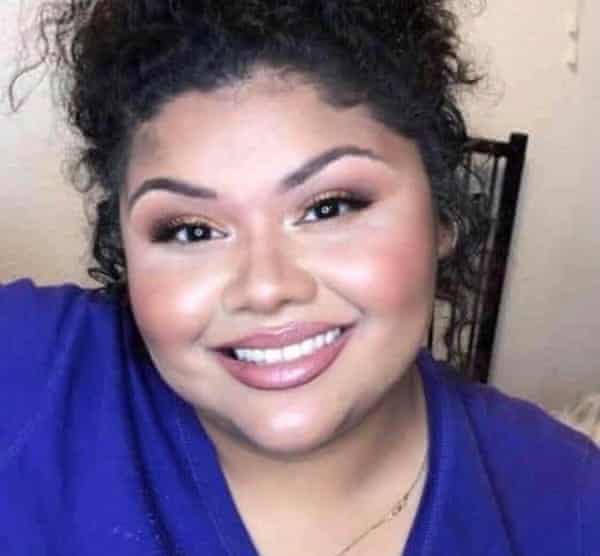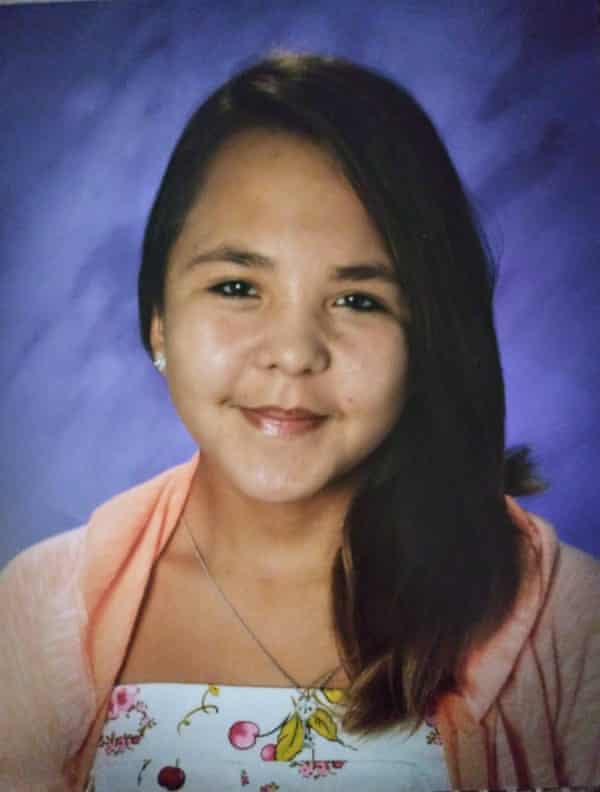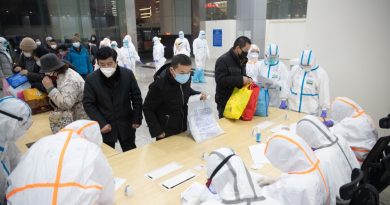Families of missing and murdered Native women ask: ‘Where’s the attention for ours? | Native Americans
The case of missing 22-year-old Gabby Petito came to a tragic conclusion this week when the FBI reported her body had been found in a US national park in Wyoming. And just as they had been during the frantic search for the young woman, news organizations and social media platforms across the US were buzzing with the terrible update.
The saga highlighted the incredible power of media attention to showcase a missing person’s case and help it reach some type of timely resolution, no matter how dire, though the search for Petito’s killer continues. But for many in the Indigenous community, it also further emphasized the lack of attention and resources too often given to the scores of missing and murdered Native people in Wyoming and the rest of the country.
In a Wyoming report released earlier this year, researchers found that between 2011 and September 2020, 710 Indigenous people were reported missing statewide, and that between 2000 and 2020, Indigenous homicide victims accounted for 21% of all homicides, despite only making up 3% of the state’s population
Despite such staggering statistics, the report, a first of its kind for Wyoming, found that white homicide victims were more likely to receive media coverage compared to Native people. And when Native cases did receive media attention, articles were more likely to include violent language or portray them in a negative light, compared with those about white victims.
“We’ve seen the stories, talked with families that are sad and hurt that this is the way that their loved one was portrayed,” said Emily Grant, senior research scientist at Wyoming Survey & Analysis Center, who led research on this report. “But it was heartbreaking, to see the numbers and then to compare it to the stories about white victims, or white missing people and see the discrepancy.”

One of the cases featured in the report was that of Nicole Wagon, a member of the Northern Arapaho Tribe who has had to face the disappearance and death of two of her daughters in the last two years.
One of her daughters, Jocelyn Watt, 30, who Wagon described as a wonderful singer with a beautiful heart, was found shot to death in her home in central Wyoming at the beginning of 2019. Her murder has yet to be solved.
A year later, Wagon had to file a missing person’s report for her daughter, Jade Wagon, 23, after she didn’t return to their home on the Wind River Reservation. Weeks later, the body of her daughter, who she said was outdoorsy and would always make her laugh, was discovered in a field. Although law enforcement claimed she died from hypothermia and drugs, Nicole Wagon said she has no doubt she was murdered.

Despite the family’s tragedies, there was little public attention on either of their deaths.
“It’s like it makes you feel like we don’t matter; we’re just a statistic,” she told the Guardian. “And I’m like, my kids are not statistics. They were human beings. And they had lives. And regardless of what people may think, or assume, they don’t know their stories.”
The epidemic of missing and murdered Native Americans extends far beyond Wyoming, reaching every corner of the US.
In April, the Department of Interior reported that about 1,500 American Indian and Alaska Native people were listed as missing in the National Crime Information Center, while thousands of other cases of murder and non-negligent homicide have been reported to the federal government’s Uniform Crime Reporting Program.
That same month, Deb Haaland, the first Indigenous cabinet secretary in US history, announced the formation of a new unit to investigate this issue. In a statement she described the violence against Native people as a “crisis that has been underfunded for decades”.
In 2008, the justice department reported that Native women on some tribal lands were murdered at over 10 times the national average. And yet, too often their cases are overlooked or even outright ignored.
Carolyn DeFord, founder of Missing and Murdered Native Americans, a national advocacy and outreach organization, said there’s not even a missing poster for some of these Indigenous women, let alone media coverage.
“Where’s the attention for ours? Where’s the attention for Ruthie Fawn Kindness?… Rosalita Longee, where’s her attention? She was a beautiful young Native woman, where’s the FBI searches and the camera crew and the dog squad to find her?” she asked.
DeFord said she would like to see a “consistency in investigations and resources put out there” for families. But at the bare minimum, she said, every family of a missing person should get a poster, their police report and a list of resources to help them, such as advocacy organizations, national missing databases, and even news media to contact.
Teri Deschene’s daughter, Kiana Klomp, has been missing for a year and a half and she said not a single article had been written about her.
The 17-year-old, who she said liked to skateboard and go shopping, had run away from her home in Post Falls, Idaho, and had been staying with friends, but she ended up at a home with a man Deschene described as a sexual predator and later disappeared.

Deschene, a member of the Tlingit Tribe, said for months she put up fliers all over the area and posted on social media, but when she tried to get her daughter’s disappearance to a broader audience, she consistently came up short.
“All I got in my pocket is Facebook, and just social media. That’s all I got. I don’t get any help from any other place. I begged. I just feel left out and unimportant,” she said.
Verna Volker, founder of Native Women Running and a missing and murdered Indigenous women activist in Minneapolis, Minnesota, said she started noticing all of the attention surrounding Petito’s disappearance and decided to check on Ella Mae Begay, a Navajo Nation elder and master weaver missing since June. She said she found less than five stories on YouTube.
But, she said, Petito’s case and the disparity it has showcased may have an impact on the situation.
“I think this tragedy actually opened more eyes of, ‘wow, you know, this is happening to you women, we want to do better,’” said Volker.
In the last week, DeFord’s Missing and Murdered Native Americans Instagram page has seen over 1,000 new followers (she said it’s unclear it’s related to Petito’s case or just a coincidence).
At the same time, Nicole Wagon, who is still waiting on answers to her daughters’ deaths, said in recent days, her family has suddenly been flooded by requests from the news media.
She said: “Maybe it’s a blessing that the Petito case happened here, because all of this is shedding light to the state of Wyoming.”

